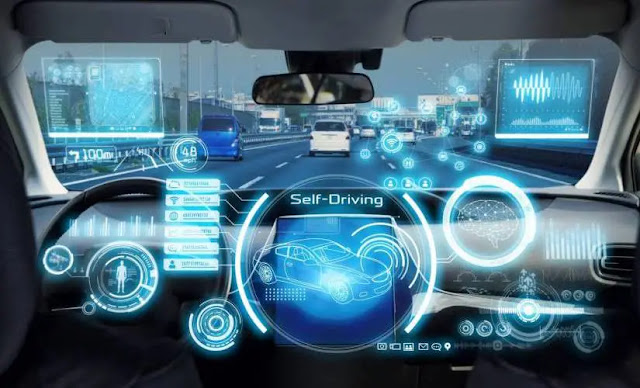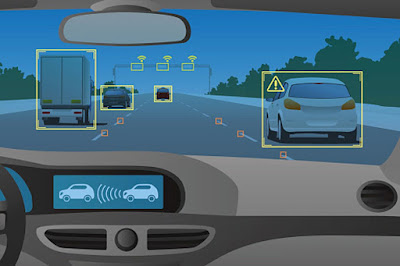As technology advances, we are in the midst of a transportation revolution. Self driving cars, or autonomous vehicle companies, are at the vanguard of this transformation. These autonomous cars are outfitted with powerful sensors, GPS navigation, and sophisticated software, allowing them to drive on the road with little to no human assistance. In this introduction, we'll look at the world of self driving cars, from their origins to their current and future uses.
The Evolution of Self Driving Cars:
The notion of self-driving cars is not new. Indeed, the first self-driving automobile was created in the 1980s. However, considerable advances in the discipline did not occur until the 2000s.
Companies such as Google and Tesla invested extensively in autonomous vehicle technology, resulting in the development of the first totally driverless vehicles.
Autonomous Technology and how it works:
The technology underlying self driving vehicles is complicated, with several components. The most essential of them is the vehicle's onboard computer, which is in charge of analyzing data from the vehicle's sensors and deciding how to run the vehicle.
GPS navigation, radar systems, and cameras are other key components. Autonomous cars, commonly known as self-driving vehicles, are the transportation of the future. To function without human assistance, these vehicles employ modern technology such as sensors, cameras, and artificial intelligence.
What are Autonomous Vehicles?
Autonomous vehicles are those that can function without the assistance of a human driver. These cars monitor their surroundings and make judgements about where to go and how to get there using a range of technologies including as radar, lidar, GPS, and cameras.
There are several forms of autonomous cars, such as:
Self-driving cars:
These vehicles can run autonomously on public roads and highways. Self-driving automobile technology is being developed by companies such as Tesla, Waymo, and Uber.
Drones:
Autonomous drones may be used for a number of tasks, including product delivery and surveillance. Drone delivery is being investigated by companies such as Amazon and Google.
Self driving Trucks:
Self driving trucks have the potential to transform the logistics business by lowering costs and increasing efficiency. Autonomous truck technology is being developed by companies such as Tesla and Embark.
Autonomous Vehicle Companies:
Several firms are developing and testing autonomous car technologies. Here are some of the industry's significant players:
Waymo Autonomous Vehicle Company:
A subsidiary of Alphabet, Waymo is a leader in the driverless car business. They are now testing self-driving cars in many cities around the United States.
Tesla Autonomous Vehicle Company:
For some years, Tesla has been a prominent participant in the electric car business, and they are also researching self-driving car technology.
Uber Autonomous Vehicle Company:
Since 2016, Uber has been testing self-driving cars, with plans to introduce a self-driving ride-hailing service in the future.
Applications of Autonomous Vehicles:
Autonomous vehicles have the potential to change the way we travel, work, and live. The transportation business is one of the most major uses of autonomous cars. Self-driving trucks and delivery vehicles can convey products more effectively, lowering costs and increasing safety.
Furthermore, self-driving taxis and ride-sharing services might replace traditional transportation services, making them more accessible and inexpensive to individuals all over the world.
The Usage of Autonomous Vehicles:
However, the usage of self-driving cars is not confined to the transportation industry. They can also be employed in industries such as agriculture and mining to conduct risky or repetitive jobs without endangering human employees.
Autonomous cars may potentially be utilized in space travel in the future, allowing humanity to explore and populate distant planets.
The Challenges of Autonomous Vehicles:
Despite their potential benefits, self driving cars confront a number of hurdles, including:
1- Technical restrictions:
Autonomous cars continue to have technical limits, especially in inclement weather or unfamiliar surroundings.
2- Regulatory Hurdles:
The development and implementation of autonomous cars face regulatory impediments, notably in terms of safety requirements and liability.
3- Public acceptance:
The general public remains doubtful and distrustful of autonomous cars, particularly in terms of safety.
The Future of Autonomous Vehicles:
In the era of autonomous cars, there are numerous prospects for both corporations and individuals. Companies that develop and produce autonomous vehicle technology have the potential to become transportation sector giants.
Software engineers, robotics, and artificial intelligence specialists will also be in great demand.
Self driving taxis:
Companies such as Uber and Lyft are developing self-driving taxis, which may eventually replace regular taxis.
Autonomous buses :
Autonomous buses have the potential to transform public transportation by lowering costs and increasing efficiency.
Autonomous Delivery:
Companies such as Amazon and Google are investigating the use of autonomous delivery vehicles, such as drones and robots, to deliver items.
FAQs About Autonomous Vehicles:
Q1: Are self driving cars safe?
A: While autonomous cars have the potential to increase safety, there are still technological and regulatory barriers to overcome before they can be extensively implemented.
Q2: When will self driving cars be available to the general public?
A: Although autonomous cars are being tested on public roads and highways, widespread deployment is still some years away.
Q3: What are the possible advantages of self driving cars?
A: Autonomous cars have various advantages, including better safety, efficiency, accessibility, and cost savings.
Q4: Self driving cars Artificial Intelligence?
A: The operation of self-driving automobiles is mainly dependent on artificial intelligence (AI). To make judgements in real time and steer the automobile, AI processes massive volumes of data from several sensors and cameras installed on the vehicle.
Conclusion:
An important breakthrough in the history of transportation is the creation of autonomous cars. These cars might increase security, lower expenses, and offer more accessible and economical transportation choices.
Before they become a commonplace aspect of our everyday lives, however, there are still important issues that need to be resolved. We may anticipate a time when autonomous cars play a significant part in our society as technology develops and matures.








0 Comments